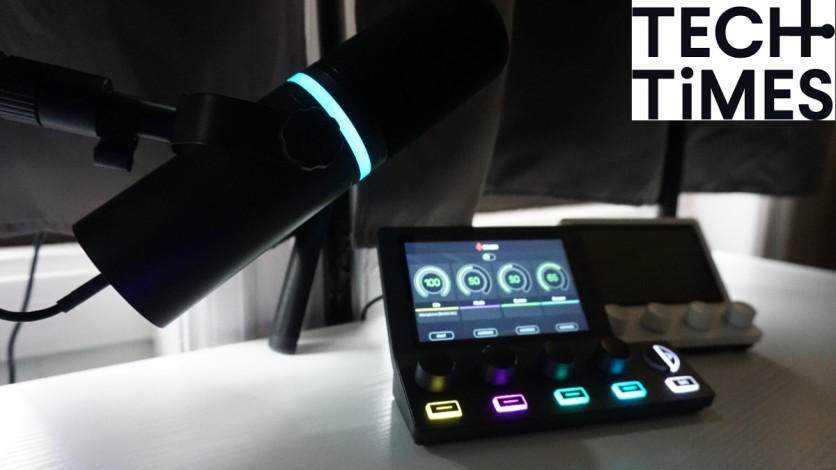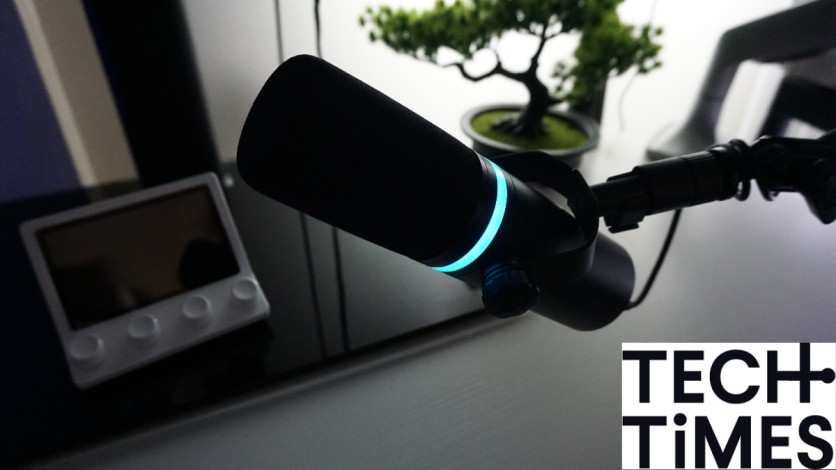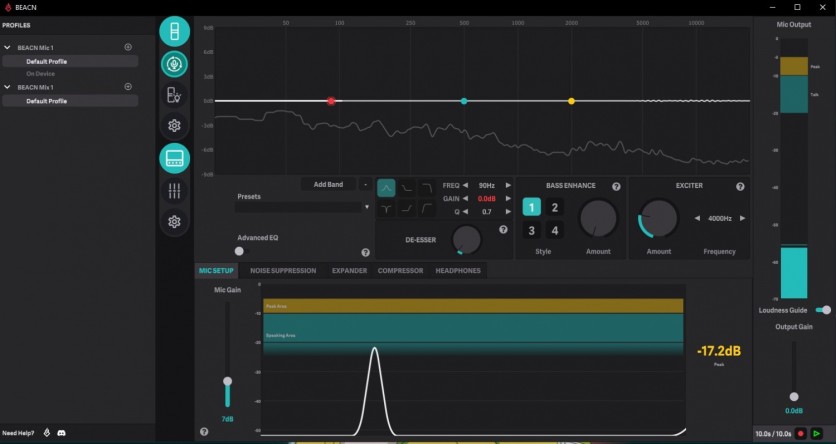USB microphones may well be a dime a dozen these days, and for the most part, they can sound quite well after several auditory tweaks, but few are backed by a legendary group of PC sound professionals, some of which can be accredited to the creation of the GoXLR. I, for one, have been using a USB MAONO A04 microphone I picked up off Amazon at $50 back in 2020; many have said it sounds great.
When compared to the Beacn Mic, however, my aging microphone doesn't stand a chance. Beacn has implemented some incredible technology within its product as well as in its accompanying software, allowing users to make their voice sound as crisp as possible through a suite of features like an expander, compressor, and even noise cancellation. For nearly $300, though, is Beacn's mic a worthy addition to a content creator's setup?
I wager to say "Absolutely," depending upon several key factors we'll get into below as we uncover all of the many pros and cons behind the Beacn Mic.
Beacn Mic Colors
The Beacn Mic is available in two different colors, Dark and White, and also features an LED ring around the stem. The light's colors and style can be edited in a slew of different ways, with my personal favorite being the circulating gradient setting, which (for me) blends green and purple in a circle around the device.

Coloration isn't for everyone, though, but I honestly do love the touch. It allows me to play with the style, and it's just subtle enough to be ignored most of the time. And for those who don't like it, you can easily turn it off. The software allows users to change the LED to a specific color, like red, or completely turn it off when the mic is muted. Unfortunately, in my testing, I've found it doesn't work in either scenario. I'm assuming it's a software issue, but it's a bit of a letdown because it adds purpose to the light beyond personalization.
The overall design of the Beacn Mic is minimalist. It doesn't stand out beyond the slight glow of the LED, and I like that. It's also quite heavy, which proves it's got some meaty internals. It comes with the necessary USB-C to USB-C wire, USB-A adapter, and accompanying 3.5mm extension cable. I like how users have the option to use it via USB-C or USB-A where necessary, and the built-in 3.5mm jack means I can use practically any headphones on the market.
Build quality, personalization, and IO all have proven to be quite substantial integrations on just a USB microphone, but the real sauce behind this thing obviously comes with the sound quality.
Beacn Mic Sound
The Beacn Mic is a USB dynamic microphone, leveraging an adjustable gain of 0 to +20dB in tandem with a frequency response between 50Hz to 20kHz. The dynamic range is set to 94dB and has a sensitivity of -27dBFS at minimum gain. Within its housing, the Becan Mic has not only a noise suppression module but also a full limiter, compressor, equalizer, and expander/gate.
This means, as previously stated, with the Beacn Mic, users can customize their sound to the perfect degree possible. Even the noise cancellation can be adjusted in several ways, specifically via the style, either adaptive or snapshot, with both the sensitivity and amount levels giving users a host of control over how the mic itself works in their favor. Using the noise suppression feature had mixed results on my end, but it helped get rid of the hubbub of the urban world outside my window. It has a bit more trouble suppressing sounds closer to the mic, like a TV or stereo system within the room.

It's also practically impossible to clip while using this mic, given its plethora of anti-peaking tech, 32-bit float audio integration, and the whole processor that's baked into the mix. While setting it up, I tried to talk quite loudly into the device, checking the Peak Audio levels to see mountains of sound crossing the barrier with little to no clipping whatsoever. In other words, despite my voice hitting well above the peak area, I still sounded great.
And on top of the mass of included features built straight into the microphone, it also sounds quite superb straight out of the box. The mic gain needed to be adjusted only slightly, but the sound quality alone proved to be stellar and crisp. With loads of additional features at users' fingertips, their voice can be altered and enhanced however they so please - quite a remarkable feat for just a USB microphone.
Still, though, at $279, the Beacn Mic is a hefty investment. Is that buy-in truly worth it?
Beacn Mic Software
I've already discussed the amazing suite of additional features the Beacn software has in our Beacn Mix and Mix Create review, but the Mic also proves to have its own long list of add-ons. What's impressive from the outset is the Mic's inclusion of a mixing table for those who may not have picked up the aforementioned Mix or Mix Create. You can find and enable it in the settings tab, labeled "Beacn Mixing Suite."
This allows users to customize all of their PC audio directly through the software. You may not have the same hardware functionality as the Mix Create, but the microphone alone allows you those options, which is a nice touch on Beacn's part. In addition to the mixing suite, Beacn's software includes loads of fun stuff to tweak on the mic, like advanced EQ settings, headphone sound levels, and EQ controls, bass enhancements, and so much more.

Although the Beacn Mic should allow users to record their voice at a ten-second clip and play it back to hear their improvements, I couldn't seem to get it to work, or at least it wasn't playing back in my headphones. Again, I'm led to believe this is a software issue, as all other sounds were coming through my headphones just fine. It could also be the Mix Create causing problems, but the option of listening to one's alterations is still there for users through the built-in mixer and switching to the audience channel.
Overall, I think the Beacn Mic is certainly up to par with that price tag. In it, your additional gifted software essentially is the equivalent of another $200 device. While I had some pains with using the software, it, more often than not, was a breeze barring the issues mentioned. For that, I can confidently say this is one of the best USB microphones on the market. It's a 9 out of 10 for us at Tech Times, but I do hope those software-based issues can be amended over time.

![Apple Watch Series 10 [GPS 42mm]](https://d.techtimes.com/en/full/453899/apple-watch-series-10-gps-42mm.jpg?w=184&h=103&f=9fb3c2ea2db928c663d1d2eadbcb3e52)


